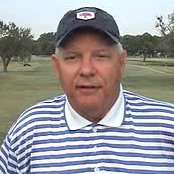Scot Duke Interview On His New Book - "How to Play Business Golf"
 We're a big fan of Scot Duke and his company Innovative Business Golf. Scot has just released a book about this very subject called, "How to Play Business Golf"
We're a big fan of Scot Duke and his company Innovative Business Golf. Scot has just released a book about this very subject called, "How to Play Business Golf"
If you think you know all there is to know about Business Golf we HIGHLY recommend you read his book. It is not only entertaining but very insightful on this often misunderstood relationship.
Scot was kind enough to let us ask him a few questions about his new book. We hope you enjoy it. When you are finished please head to the link at the end of this post to get a copy.
1. How do you define Business Golf?
Most of the time golf is used as a casual outing and as predominantly a sales tool. I define Business golf as being a purposeful golf outing where business is conducted. Business Golf is more a business tool. Not a six hour sales pitch.
2. What are a few of the most valuable points I can receive by reading your book?
The three things each person who reads the book, hears my speech or attends the seminar/workshop will leave with:
1. A complete awareness and understanding of the importance for the need to develop solid business relationships,
2. Learning why businesses need to quit using golf as a sales tool and how to use it as a business tool
3. And understand why businesses need to stop treating a large percentage of their customer, employee and vendor base as being disposable.
The product of all of this is long lasting business relationships that will take a business long into the future…
3. How can one use Business Golf to their advantage?
Like a marketing tool, or a promotional tool, Business Golf is a Business tool that if used correctly will produce sales, develop positive imagery and solid business relationships.
4. Why is the "environment" of golf important?
Business Golf is played outdoors and provides a healthy alternative to a sit-down business meeting. Business Golf is played at upscale facilities that produce a positive atmosphere for successful business development.
5. What is the biggest misconception about Business Golf?
There are a few. The most popular is most business people thinking golf is just a sales tool. A six hour sales pitch. An opportunity to hold hostage a person for more than the 15 minutes usually allowed someone to pitch a deal. Other misconceptions are related to non-golfers not understanding what golf is all about; what golf can develop and how it can improve a business’ bottomline. Business Golf is not a frilly attempt to contrive a reason to organize a golf outing.
6. Can you share a memorable Business Golf story from your experience?
One of my most memorable experiences had to do with a round of golf I witnessed in Las Vegas that exemplified how most business people are trying to wrongly use golf. This particular round of golf had a very rough ending and serves as a story I tell people on what happened to this one individual who went ahead and tried to close a deal on the golf course.
A gentleman in front of my group was entertaining three guests for a round of golf at one of the best golf courses in Las Vegas.
What I witnessed for three holes was this gentleman in front of us suddenly pulling out charts and graphs and laying them out on his golf cart seat for his guests to look at. Not only did his actions slow up play it was annoying his guests who came to play golf.
When my group got to the clubhouse after the first none holes I got to witness what takes place when someone comes to a golf course to other things other than play golf.
There seemly was some sort of altercation between the gentleman and the management of the golf course and all of the sudden six very large caddies escorted him to the parking lot and the three other guys continued on to play.
After we finished our round I ran into the three guys who were in front of us and asked about what was taking place with the little man getting kicked off the course, Embarrassed, they told me the story of what happened.
What took place was the little man invited these three gentlemen to meet him in Las Vegas to meet over a contract deal. The dinner meeting was scheduled for later that evening.
On the second hole the gentleman received a call on his cellphone from his boss instructing him to close the deal on the course and catch the next plane to the office to clear up a mess they were in.
So the gentleman politely told his guest that dinner was off and he wanted to talk about the contract while they played. His guests refused and said they were invited to play golf and that was what they came to do. They offered to reschedule the dinner for another time...the gentlemen arrogantly pursued pitching the deal. When the group made the turn they asked the club manager if they could help with the situation since they paid a lot of money to play golf and did not want this gentleman bothering them anymore.
What took place when my group pulled up to the clubhouse after nine was we got to watch as this gentleman gets into an altercation with the manager and was asked to leave. When he refused he was escorted off the property.
This experience really confirms what I am talking about on how using golf as a sales tool just will not work, but is being used this way everyday.
Buy How To Play Business Golf Today!



